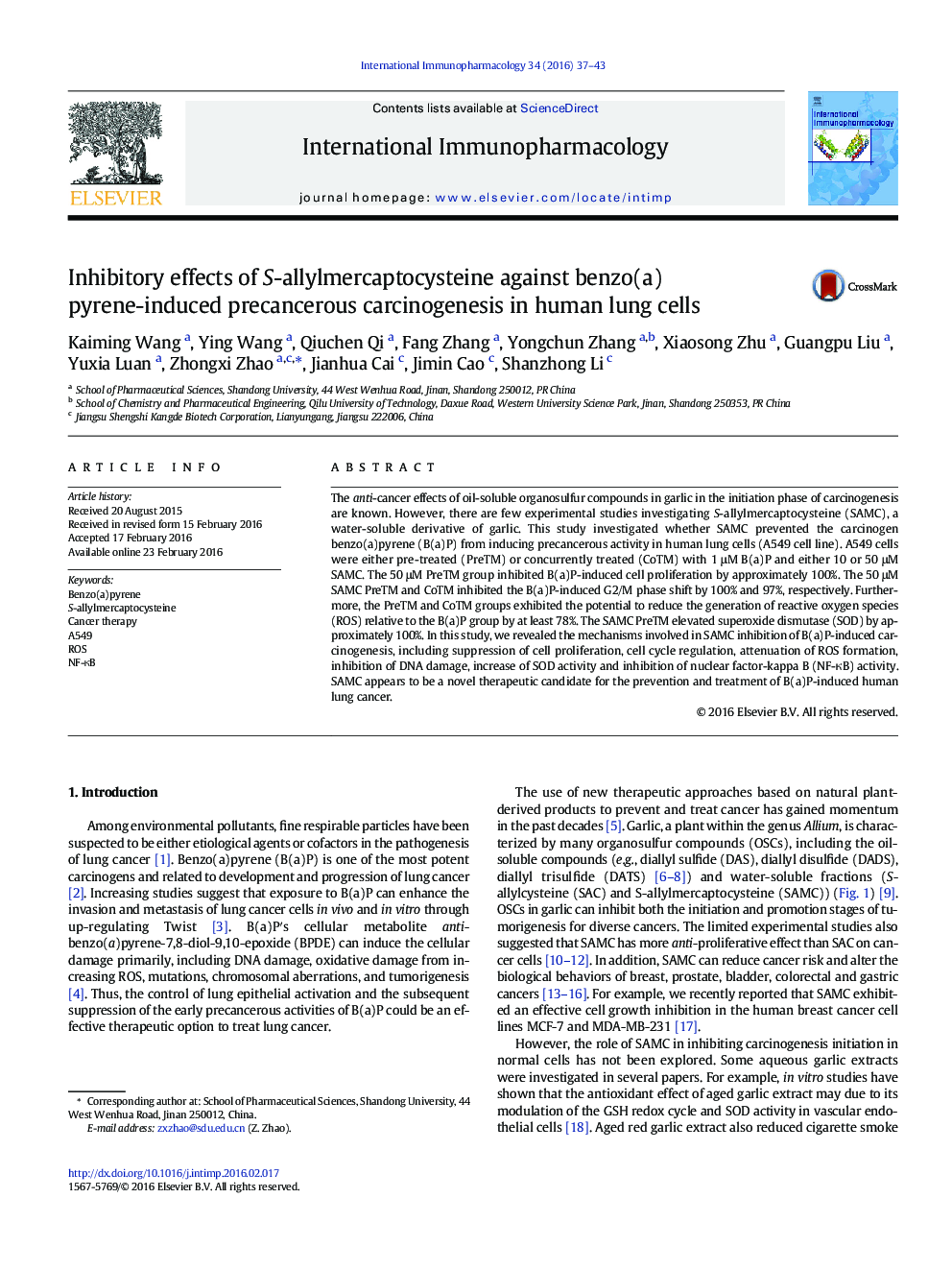| Article ID | Journal | Published Year | Pages | File Type |
|---|---|---|---|---|
| 2540258 | International Immunopharmacology | 2016 | 7 Pages |
•SAMC inhibits B(a)P-induced cell proliferation and cell cycle changes.•SAMC attenuates production of ROS in B(a)P-activated A549 cells.•SAMC inhibits decrease of SOD activities.•SAMC exhibits these effects by suppression of NF-κB pathways.
The anti-cancer effects of oil-soluble organosulfur compounds in garlic in the initiation phase of carcinogenesis are known. However, there are few experimental studies investigating S-allylmercaptocysteine (SAMC), a water-soluble derivative of garlic. This study investigated whether SAMC prevented the carcinogen benzo(a)pyrene (B(a)P) from inducing precancerous activity in human lung cells (A549 cell line). A549 cells were either pre-treated (PreTM) or concurrently treated (CoTM) with 1 μM B(a)P and either 10 or 50 μM SAMC. The 50 μM PreTM group inhibited B(a)P-induced cell proliferation by approximately 100%. The 50 μM SAMC PreTM and CoTM inhibited the B(a)P-induced G2/M phase shift by 100% and 97%, respectively. Furthermore, the PreTM and CoTM groups exhibited the potential to reduce the generation of reactive oxygen species (ROS) relative to the B(a)P group by at least 78%. The SAMC PreTM elevated superoxide dismutase (SOD) by approximately 100%. In this study, we revealed the mechanisms involved in SAMC inhibition of B(a)P-induced carcinogenesis, including suppression of cell proliferation, cell cycle regulation, attenuation of ROS formation, inhibition of DNA damage, increase of SOD activity and inhibition of nuclear factor-kappa B (NF-κB) activity. SAMC appears to be a novel therapeutic candidate for the prevention and treatment of B(a)P-induced human lung cancer.
